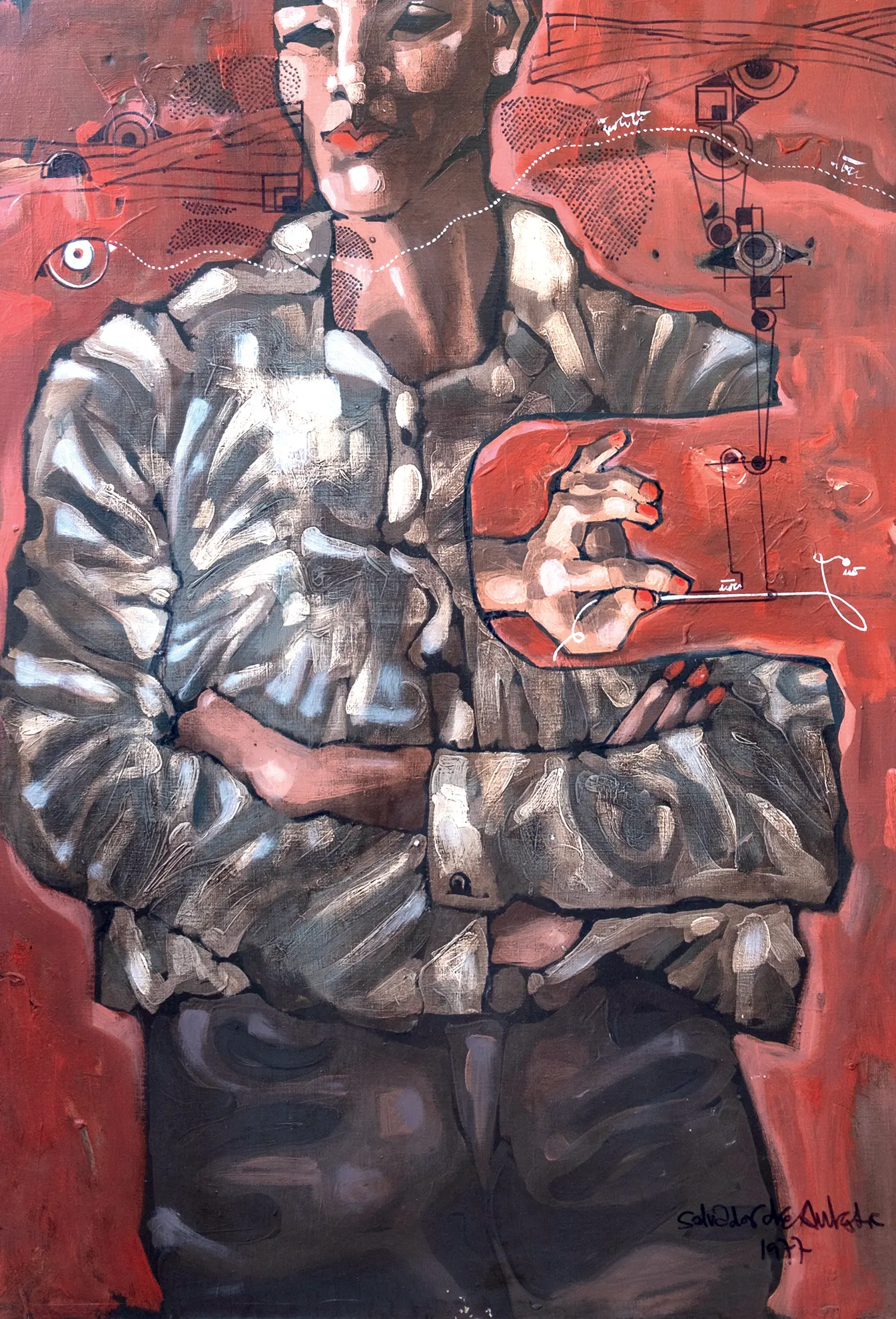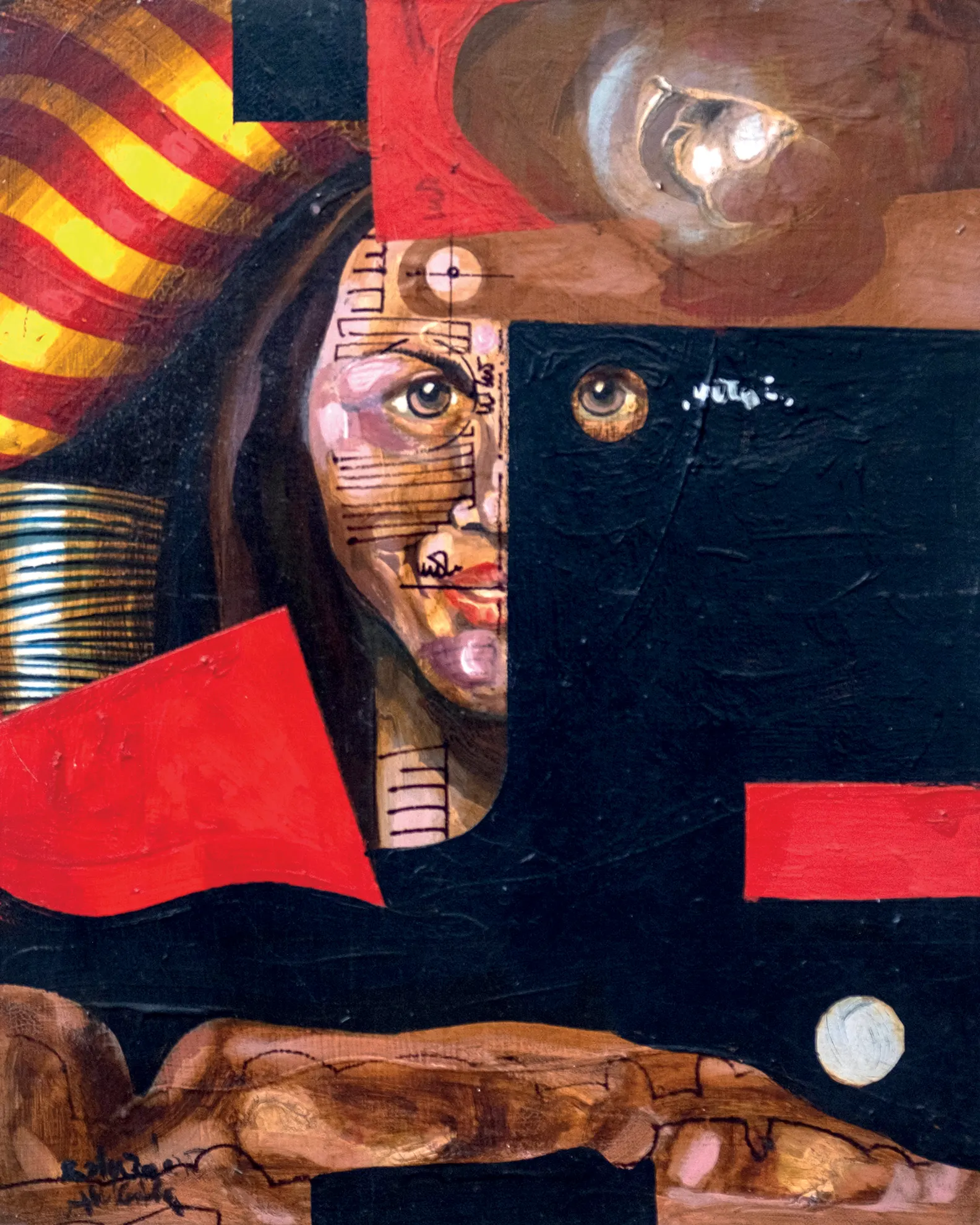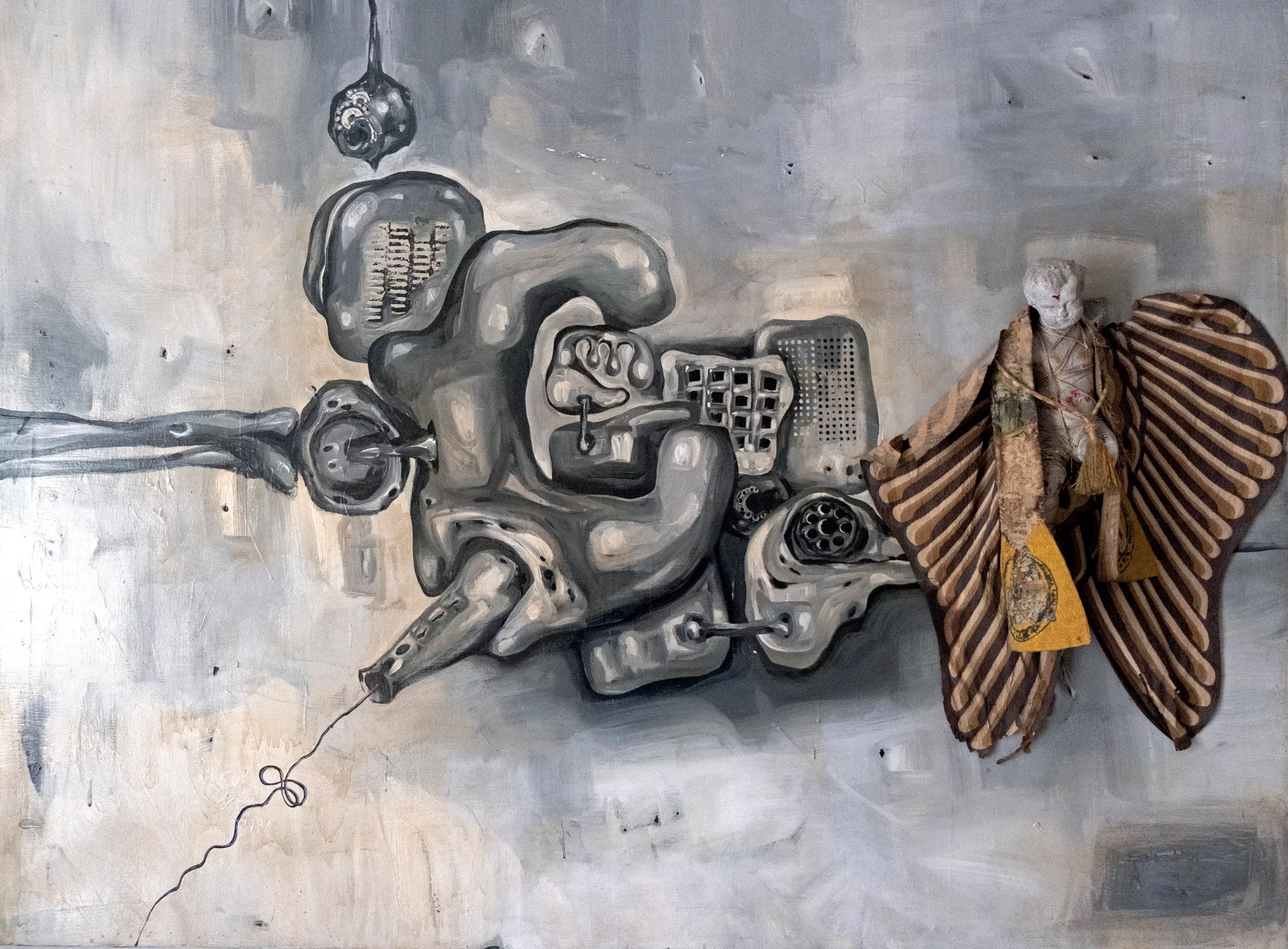SALVADOR AULESTIA - APOTIST GENIUS
The exhibition presents a reinterpretation of Salvador Aulestia's work by Luca Temolo Dall'Igna, curator and leading international expert on the artist, whom he knew and frequented for more than 20 years and whose Archive he manages, the only one responsible for and authorized to authenticate the master's works.
The idea is to bring the public closer to the concept of 'Apotist Art', which represents the shortest distance between idea and expression; it is eternal art by essence or the eternal essence of art and has as its axiom the following theoretical message: 'Marguerite contemplates the sea, the sun and an old man who contemplates the sea and the sun; but the sea, the sun and the old man, without Marguerite they have no reality'.

Nuptial periphery without refrain oil on canvas 1980 - 120x80cm

The perpetual imitator oil on canvas 1977 - 100x70cm
Thanks to the collaboration with the Salvador Aulestia Archive, his masterpieces, paintings and sculptures, some of which have never been exhibited before, will be on display, giving the opportunity to get closer to the profound and special meaning of the concept of art that the artist had developed, through the introduction of the Manifesto of Apotelesmatical Art, or Apotista, which he published for the first time in 1965.

"The Ship" (Teraphim). mixed technique 1974 - 45 x 29 x 38h cm

Article on Salvador Aulestia and Salvador Dali - two Catalan geniuses

Salvador Aulestia with the King of Spain H.M. Juan Carlos I

Salvador Aulestia at Milan's Palazzo Reale for the exhibition "Homage to Cataluna"- 1980


El Sideroploide - Homage to the Men of the Sea located in the port of Barcelona 65x17meters - iron
Apotist genius then, because we are not talking about a 'simple' artist, but about a complex and multifaceted figure, who elevated art, writing and creativity to a universal value.
Artworks such as 'The Birth of Evinrude and the Two Liliths', the sculptures 'Teraphim' and the sculpture furniture, will take us into a world where magic, alchemy and cosmic energy will also be physically perceptible.

The birth of Evinrude and the two Liliths detail

"The Birth of Evinrude and the Two Liliths" acrylic and ink on canvas 1978 - 200 x 140 cm

"Relentless Survival" acrylic on canvas 1981 - 60 x 70 cm

"untitled" acrylic on canvas 1981 - 80 x 60 cm

"Renunciation without homage in the sea" acrylic on canvas 1983 -120 x 80 cm


Aulestia was not only a passionate creator but an experimenter of inventive activities, all put on the same level: painting, architecture, sculpture, literature, music, poetry.
That is why in him the autobiographical aspect is a connotation that can also be confusing because, his lifestyle, the compressed rhythm in every activity, the results, even the geographical changes and the impressive number of objects produced - from the apartment building to the small sculpture, passing through thousands of pictorial canvases - arouse images of a race always close to a final rush, a tour carried out by circumventing disciplines and affairs of life only so seemingly distant from each other.
(Luciano Bolzoni - from the catalog Salvador Aulestia - Apotist genius - Almach Art Publisher)
The origin of Teraphim is very ancient and the name should be traced back to Jewish tradition.
The aesthetic aspect of the Teraphim is important because, as Edward Bulwer Lytton says, ignorance shuns light, but it is a beauty that responds to the aesthetic standards of the time and civilizations that made them.
Teraphim were figurines that, animated by their inhabitants, who were attracted by their shape and the materials they were made of, answered questions by emitting a voice, tilting on their plinths or giddily rotating around their own axis.


"The Eugenic Bagat" acrylic and ink on canvas 1979 -100 x 120 cm

"Lilith" acrylic on canvas 1982 - 50 x 40 cm

"Romantic relationship without an umbrella" acrylic on canvas 1979 -80 x 60 cm

"Arcatrapa with putto" acrylic and mixed media on canvas 1981 - 120 x 160 cm

